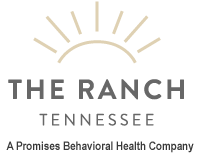Many people have heard of post-traumatic stress disorder (PTSD), but there is a related condition known as acute stress reaction or acute stress disorder. The main difference is that the symptoms last much longer with PTSD than with acute stress disorder.
Stressful Events Trigger Physical and Emotional Responses
The types of stress that we face in our day-to-day lives can be dealt with on an as-needed basis. When we have a test to prepare for, we might feel a twinge of nervousness anytime we think about it and we might spend the night before the exam preparing. But once the test is over, we usually feel instant relief. In contrast, the stressful events that trigger symptoms strong enough to be classified as either PTSD or acute stress disorder are unforeseen and traumatic. They might include natural disasters, car accidents, broken bones or severe injuries, being a victim of violence or witnessing violence, struggling with a potentially fatal illness, and more. The symptoms of acute stress disorder or PTSD include:
- Anxiety
- Irritability
- Mood swings
- Poor concentration
- Problems sleeping
- Recurrent nightmares or flashbacks
- Avoiding people or places that serve as reminders of the stressful event
- Aggression
- Recklessness
- Emotional numbness
- Nausea
- Headaches
- Abdominal pain
- Difficulty breathing
- Rapid heart beat
Again, the main difference between acute stress disorder and PTSD is simply the length of time that these symptoms persist. For some people, a traumatic event will cause these symptoms to last for only a few days. For others, symptoms might continue for a few weeks. If they continue for more than a month, PTSD is usually the diagnosis. It is best to seek treatment as soon as possible. There is no reason to wait and try to resolve the problem on your own.
Treatment for Acute Stress Disorder
Acute stress disorder can be treated with different therapeutic modalities, such as talk therapy, cognitive behavioral therapy and psychodrama. Medications can be used to ease some of the more disruptive symptoms, such as anxiety, depression or insomnia. Through cognitive behavioral therapy, a popular treatment method, you will learn to recognize how your current behaviors and thought patterns may be getting in the way of your healing process. You’ll then be able to change your thoughts or behaviors to more positive ones. To learn more about the treatment options available for acute stress disorder, don’t hesitate to contact us. Resources https://patient.info/health/acute-stress-reaction-leaflethttps://www.ptsd.va.gov/professional/treatment/early/acute-stress-disorder.asp



